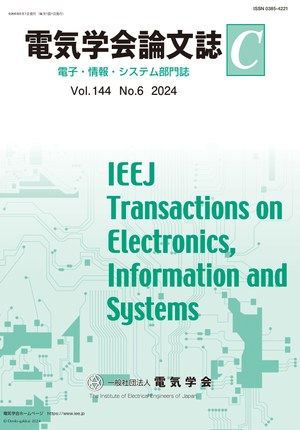The Effect of Virtual Reality Head-Mounted Display Stimulus in Sit-Stand Motor Imagery Training Paradigm
The Effect of Virtual Reality Head-Mounted Display Stimulus in Sit-Stand Motor Imagery Training Paradigm
カテゴリ: 論文誌(論文単位)
グループ名: 【C】電子・情報・システム部門
発行日: 2024/06/01
タイトル(英語): The Effect of Virtual Reality Head-Mounted Display Stimulus in Sit-Stand Motor Imagery Training Paradigm
著者名: Phurin Rangpong (Tokyo Institute of Technology), Akima Connelly (Tokyo Institute of Technology), Pengcheng Li (Tokyo Institute of Technology), Theerawit Wilaiprasitporn (Vidyasirimedhi Institute of Science and Technology), Tohru Yagi (Tokyo Institute of Technology)
著者名(英語): Phurin Rangpong (Tokyo Institute of Technology), Akima Connelly (Tokyo Institute of Technology), Pengcheng Li (Tokyo Institute of Technology), Theerawit Wilaiprasitporn (Vidyasirimedhi Institute of Science and Technology), Tohru Yagi (Tokyo Institute of Technology)
キーワード: motor imagery,brain-computer interface,electroencephalography,virtual reality,head-mounted display
要約(英語): Lower limb Motor Imagery (MI) of a sit-stand motion using electroencephalography (EEG) has been studied with the aim of rehabilitation. We aim to explore the use of self-perspective stimulus using virtual reality head-mounted displays (VR-HMD), which has promising results in upper limb MI tasks but is yet to be explored in sit-stand. We compare VR-HMD and on-screen stimulus using an action observation (AO), MI, and motor execution (ME) paradigm with EEG and electromyography (EMG) recording. We examined features including time-frequency analysis of event-related synchronization/desynchronization (ERS/D), corticomuscular coherence, and decoding with Common spatial pattern. Results from time-frequency analysis show a significant difference in ERS/D in alpha and beta. Coherence analysis shows higher functional connection between the lower limb sensorimotor cortex region and the tibialis anterior muscle in AO tasks for VR-HMD. The classification performance from VR-HMD sessions is better in most subjects, though not significantly. The before-after effect was examined and found to be not affected. Results indicate that VR-HMD stimulus for the sit-stand task is a feasible MI paradigm with some benefits over a screen-based method.
本誌: 電気学会論文誌C(電子・情報・システム部門誌) Vol.144 No.6 (2024)
本誌掲載ページ: 528-534 p
原稿種別: 論文/英語
電子版へのリンク: https://www.jstage.jst.go.jp/article/ieejeiss/144/6/144_528/_article/-char/ja/
受取状況を読み込めませんでした


